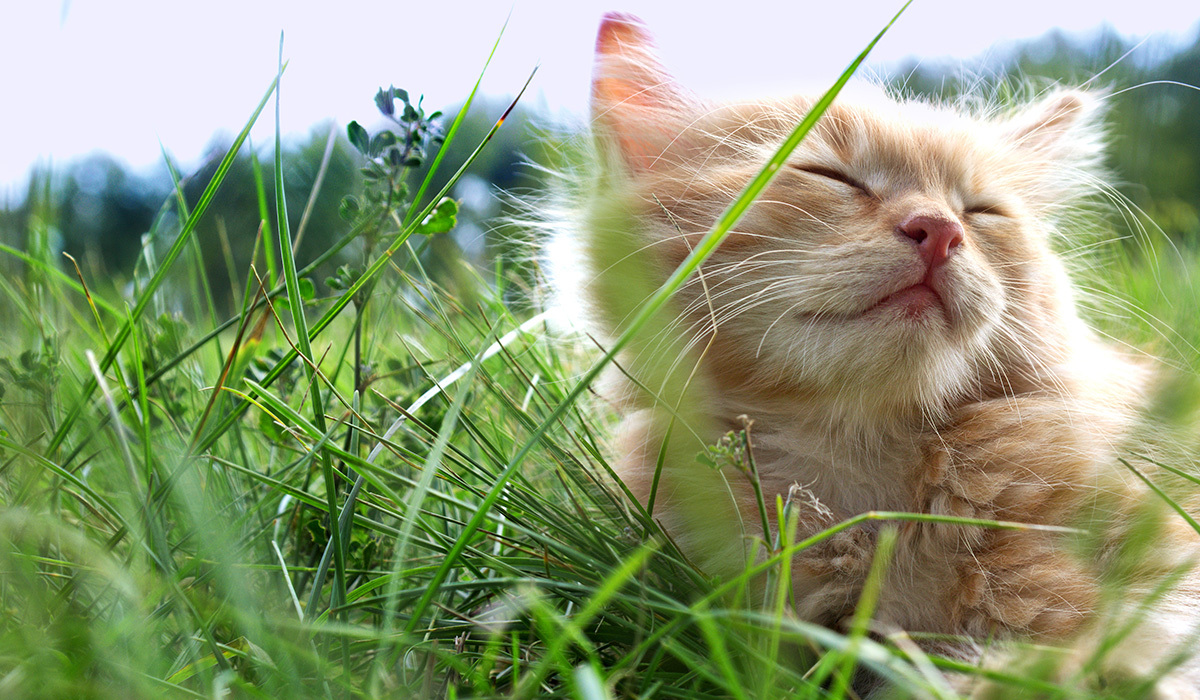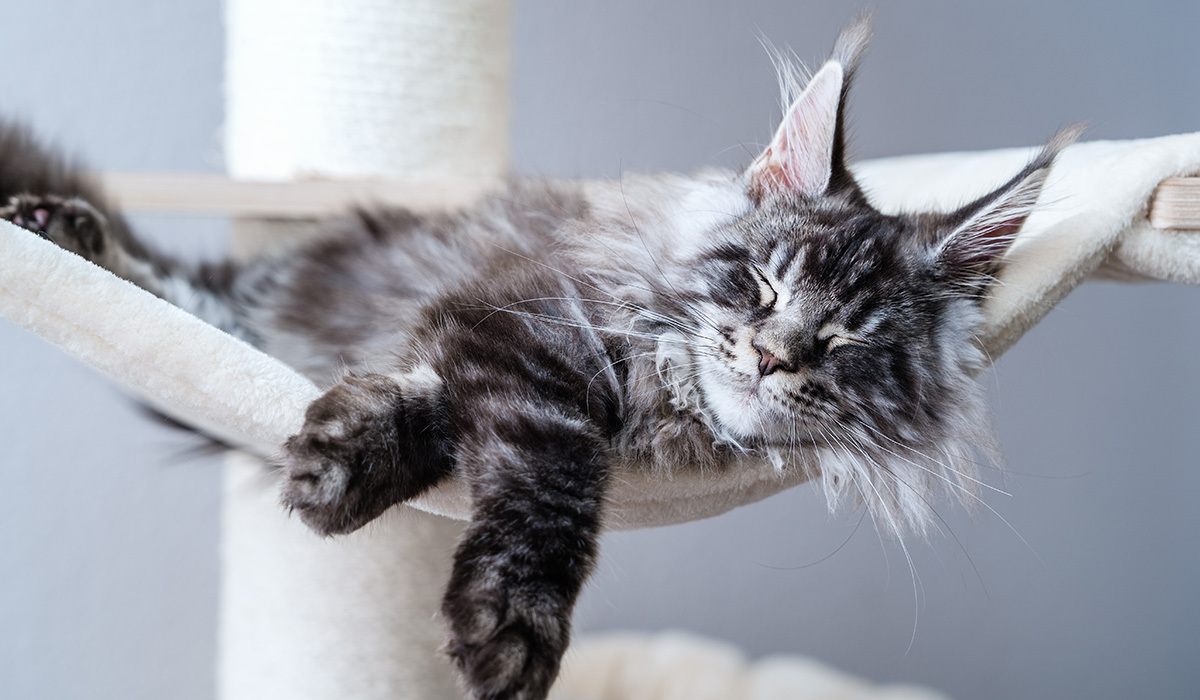Keeping Cats Healthy and Preventing Cancer – Part 3
25th Apr 2025

This month’s newsletter forms Part 3 of our series, in keeping cats healthy and cancer prevention.
We will focus on a further 2 tips that are equally important in helping cats live a longer, healthier life.
As with the previous articles, this comes courtesy of our medical specialist, Vicki Adams, who is a trained Veterinarian and Veterinary Epidemiology Consultant, working for the Animal Cancer Trust Charity.
Creating a wholesome environment for your cat is fundamental for good health and happiness. There are lots of things you can do to make your house cat-friendly and safe. While we all know how important our homes are, it’s much easier for us to make changes, than it is for our cats.
This is important because your cat may well choose to live elsewhere if they are unhappy with your home or surroundings. Cats have very particular requirements, and this is why it’s imperative to make sure you’re providing for all their needs.
Thinking about what cats need to be happy means meeting their 5 welfare needs at the very least. These include:
- the need for a suitable diet – discussed in one of our previous newsletters
- the ability to exhibit normal behaviour patterns
- to be housed with, or apart from other animals
- to be protected from pain, suffering, injury, and disease
- the need for a suitable environment – the topic of this article
5 Environmental factors
Cats are considered non-obligate social creatures, meaning they can thrive independently, whilst also showing a level of sociability that is unique to each cat. This is why it’s important that your cats have their own space.
A suitable environment for a cat must include safe, quiet places where they can rest and sleep as much as they need. Most domestic cats sleep for approximately 12-18 hours a day. Setting up quiet areas for your cat can really help them and give them somewhere to escape to if they need a bit of alone time.
Although your cat will enjoy your company, you need to let them come to you for fuss and attention. Cats very much prefer things ‘on their terms’ and won’t appreciate being cuddled if they’re trying to have quiet time. It can be hard not to make a big fuss of your cat, but if they go to their quiet area, it’s really best to leave them alone.
Your cat may also be aloof with unfamiliar people and it’s important not to force them to spend time with new people if they don’t want to. It may take a cat some time to get used to new people and accept them as part of their little social bubble.
Cats are creatures of habit, loving routine and familiarity. Big changes and new situations can be stressful if they’re not introduced slowly, and your cat isn’t given time to get used to them.
Keeping cats to the same routine every day is beneficial for most cats. However, cats also need space to explore and play, and plenty of toys to keep them occupied. Although your cat may like familiar things, providing new toys and objects to explore, is a good way to prevent boredom and behavioural problems. A favourite is often simply an empty cardboard box that can provide your cat with a bit of easy entertainment (such as the Purrform delivery boxes!).
One of the most important things to keep in mind to ensure your cat is happy at home, revolves around ‘resources’ - food, water, bed and litter tray. In a single cat household, your cat should have at least one of each of these. In multi-cat households, resources are even more important to prevent behavioural problems or territorial disputes.
While some cats seem to ‘time-share’ well, other cats can become stressed if they have to share their resources. Just think of how frustrated you might become if you had to wait for the bathroom, or drink from the same glass as everybody else! To minimise stress in multi-cat households, it is recommended to follow the rule of number of cats + 1 or number of cats x 2 for the total number of litterboxes, resting, feeding and drinking places.
Stress can also be minimised in a multi-cat household by fostering the development of a group scent for your cats. As scent plays a key role in cats’ social interactions, encouraging a group scent can help your cats bond and prevent aggression (Encourage group scent in multi-cat households). Feline pheromone therapy is another way to minimise stress in single or multi-cat households, using sprays or diffusers containing artificial pheromones or using a cat’s own pheromones around the house (Pheromone therapy).
There are several other things you can also do, to make sure your home is somewhere your cat feels comfortable. Where you put their things is just as important as making sure they have enough of everything. Where you set up your cat’s feeding, drinking, toileting and sleeping areas is very important to them. Firstly, these should all be in separate places. Ideally their food will be somewhere away from any doors to the outside, so they won’t feel threatened or worry that another cat is going to come in and steal their food. Their water needs to be kept in a separate place to their food, because in the wild they wouldn’t eat and drink in the same place and our domestic cats also prefer to have these resources separate, too. Sleeping and toileting areas should be somewhere quiet and places to sleep should be somewhere fairly warm and out of any draughts. Remember, cats often like to be high up, so they may prefer a sleeping area set up on wall mounted cat shelves, or on the sofa, where they can feel safe and keep an eye on their surroundings.
When considering the effects of environmental factors on cancer prevention, chemicals used in the house, agricultural substances and lawn treatments are all recognized culprits in instigating cancer in animals. Pets can inadvertently accumulate pesticides, herbicides, insecticides and other chemicals on their paws, through grooming practices and by investigating the ground. Opting for non-toxic or organic alternatives for lawn and garden care is advisable, or alternatively, restricting your pets' access to chemically treated areas. Household chemicals also pose a potential hazard to our furry companions. You can opt to avoid products that bear warnings to keep them out of reach of children and pets and choose safer alternatives.
Environments characterized by heavy traffic, driveways, parking lots and spots where running vehicles linger, can pose threats to all living beings, due to the detrimental consequences of petrol and diesel emissions.
The issue of second- and third-hand smoke exposure affects pets just as significantly as it does people, particularly for pets that spend hours each day near a smoking individual. Second-hand smoke exposure or passive smoking occurs with inhalation of smoke from another person's tobacco product. Thirdhand smoke is the toxic residue left behind after someone has smoked, lingering on surfaces and in the air even after the smoke has cleared. This residue can contain harmful chemicals that persist for days, weeks, or even months. Exposure to thirdhand smoke can occur through inhalation, touching contaminated surfaces, ingesting contaminated food or, for our pets, grooming contaminated fur. Research has demonstrated that cats exposed to second-hand smoke have an increased likelihood of developing lymphoma and oral squamous cell carcinoma.

6 Light
The notion of light as a preventive measure against cancer might not readily cross our minds, yet it holds potential significance. However, not just any light will suffice; it must be full-spectrum, unfiltered light capable of activating the hypothalamus and maintaining equilibrium within the nervous and endocrine systems.
Inadequate illumination or exposure to incorrect types of light (such as fluorescent lighting) can adversely affect the well-being of various life forms including plants, animals, fish, birds and reptiles. This phenomenon, now termed malillumination, has been shown to suppress immune function and contribute to skin damage, cancer and other health issues.
Both our own health and the well-being of our pets requires exposure to natural light. Giving your pets access to spaces such as a shaded/screened porch, the shelter provided by a tree or an open window or doorway, can provide this essential element. It's important to note that while certain plastics allow transmission of full-spectrum natural light, materials like glass windows do not. While cats don't need sunlight to synthesize vitamin D like humans, natural light exposure offers benefits for their health and well-being. Exposure to sunlight can help regulate their circadian rhythm, improve mood, and may offer some protection against certain conditions.
It is also important to prevent damage from overexposure to direct sunlight. This is as true for our pets as it is for people. Light skin pigmentation combined with lots of time outside can increase the risk for some cancers. Make sure your pet can get out of the sun and avoid prolonged exposure to sunlight, especially around midday, when it is strongest.
However, access to the outdoors is important when considering light exposure. Most cats love being outside as there’s lots of new things to sniff, space to run around and plenty of things to explore. If you can, installing a cat flap allows your cat to come and go as they please. This will give them the independence all cats love and make sure they’re free to come inside if and when they need to. If you’re worried a cat flap will encourage other neighbourhood cats to come into your house (and potentially steal your cat’s food or cause them stress) you can install a microchip cat flap that only your cat can use. Since it’s not always possible or advisable to give your cat free range access to the outdoors, you can consider installing a ‘catio’ or something similar where your cat can explore outside in a secure environment.
This article has highlighted the importance of environment and light as 2 additional tips to support a cat’s health, along with the other 4 tips, covered in our previous newsletters
(diet, water, exercise & emotional wellbeing)
Keep following our articles next month for a further 2 tips in Part 4.
